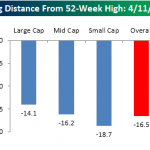Is the Fed’s interest rate increase pegged for next Wednesday already in stock prices? Or are investors worried that something else is afoot given recent equity sector weakness?
Stocks Thursday rallied modestly and unevenly which relieved some short-term oversold conditions.
Leading the way higher were beaten down energy shares (despite decline energy prices), healthcare and biotech names.
Experienced pundit John Mauldin recently wrote “The Apex of Stupidity” which is published below:
“In the last week, we have reached what is surely the apex of this stupidity. A bunch of algo traders programmed their computers expecting “Derivative Draghi” to be extremely dovish, as any proper Italian central banker should be. I am not sure I understand why, but some traders obviously decided that he had not been dovish enough. European stock markets plunged by -4%, while the euro went up by roughly the same amount in the space of a few minutes. What that means is simple: value in the financial markets is no longer a function of the discounted cash flow of future income, but instead is determined by the amount of money the central bank is printing, and especially by how much it intends to print in the coming months. So we are in a world where I can postulate the following economic and financial law: variations in the value of assets are a function of the expected changes in the quantity of money printed by the central bank. To put it in a format that today’s economists understand:
? (VA) = x *? (M),
where VA is the value of assets and M is the monetary increase.
What we are seeing is in fact in one of the stupidest possible applications of the Cantillon effect, whereby those who are closest to the money-printing, i.e. the financial markets, are the biggest beneficiaries of that printing. This is exactly what happened in 1720 in France during the Mississippi Bubble inflated by John Law. The end results were not pretty.














Leave A Comment